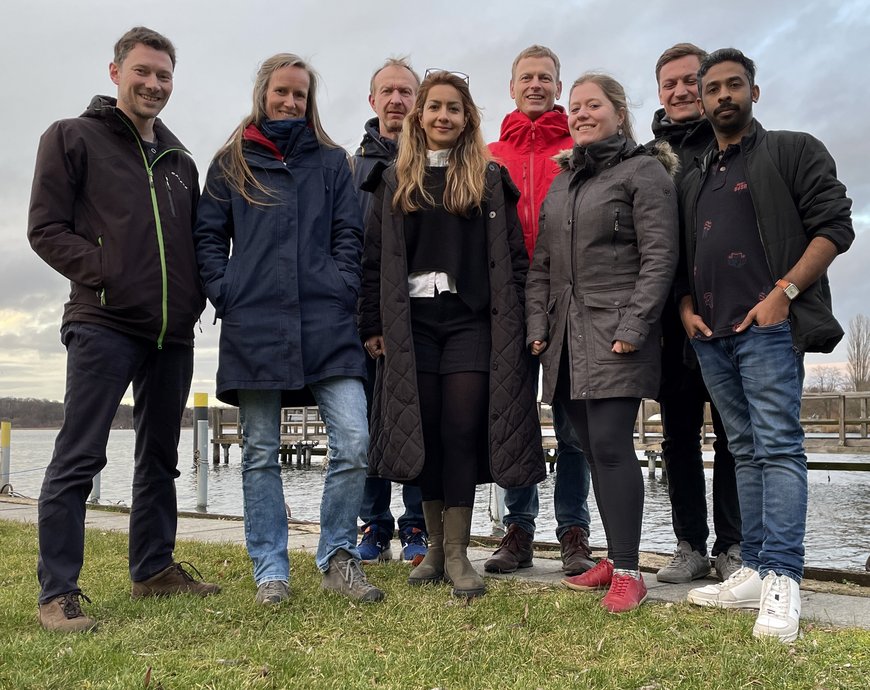Earth-Atmosphere Interactions (TEAM)
The Earth-Atmosphere Interactions Group has evolved from the Helmholtz Young Investigators Group TEAM (Trace Gas Exchange in the Earth-Atmosphere System on Multiple Scales; 2012-2017) and focuses on geosphere-atmosphere interactions. In particular, we study the turbulent fluxes of heat, water, and carbon (as CO2 and CH4) between a range of geo-ecosystems and the atmosphere on a wide range of temporal (from minutes to multiple years) and spatial (from local to continental) scales.
Our current study sites are located in mostly pristine permafrost regions of Alaska, Canada, and Siberia as well as in heavily disturbed and degraded peatland and freshwater systems in North-East Germany. We use stationary long-term observatory sites to investigate processes and temporal trends on local scales and have developed a unique expertise in airborne measurements to study "the larger picture", spatial patterns and the representativenes of our observatory sites in the regional or continental context.
As part of the German Terrestrial Environmental Observatories Network (TERENO), we have established long-term observation sites in a flooded peatland in Zarnekow(DE-Zrk) in Mecklenburg-Vorpommern as well as on Lake Dagow (DE-Dgw). With partners at the University of Hamburg and the Alfred Wegener Institute, Helmholtz Centre for Polar and Marine Research, we also operate the flux tower at the Russian-German Research Station Samoyolov Island in the Siberian Lena River Delta (RU-Sam). All of these sites are part of FLUXNET, a global network of hundreds of flux tower sites.
The airborne measurements (AIRMETH - Airborne Measurements of Methane Flux) are conducted on a campaign basis aboard the research aircraft Polar 5 and began in 2011 with partners at the Alfred Wegner Institute and flights in NE Germany and Scandinavia. Since 2012, the AIRMETH measurements have been conducted regularly in the permafrost regions of northern Alaska and northwestern Canada. Also in 2012, we proved helicopter-based measurements of heat and carbon dioxide fluxes to be feasible in the Lena River Delta, Siberia, and subsequently conducted an extensive campaign covering the end of winter, spring break-up, and the peak of the growing season in 2014. These measurements were realized jointly with the Technische Universität Braunschweig that provided the Helipod, an autonomous helicopter-towed micrometeorological instrument package.
Our work in Siberia has been documented extensively in the media, for example a TV documentary in 2012 (in German only) and a feature in Le Monde in 2017.
Interested?
If you are a student interested in our research, you are welcome to contact us for possible topics for internships, bachelor or master theses! If you are interested in pursuing a PhD with us, we are happy to help you secure funding through scholarships or other third party sources. Potential funding sources include the DAAD or any of the organizations listed here: https://www.research-in-germany.org/en/your-goal/phd.html
Please do not hestitate to get in touch with us!
From left to right: Prof. Dr. Torsten Sachs (Group leader), Dr. Pia Gottschalk (Scientist), Dr. Dipl.-Ing. Mathias Zöllner (Engineer), Dr. Aram Kalhori (Scientist), Dipl.-Ing. Christian Wille (Engineer), Dr. Inge Wiekenkamp (Postdoctoral Scientist), Dr. Martin Roffeis (Postdoctoral Scientist), Nithin Pillai (PhD student)
Former:
Dr. Felix Nieberding, Dr. Norman Rößger, Dr. Zhan Li, Dr. Katrin Kohnert, Dr. Andrei Serafimovich, Dr. Franziska Koebsch, Dr. George Tanski, Dr. Matthias Fuchs, Bennet Juhls, Daniela Franz, Eric Larmanou, Youping Li, Nora Krebs, Stefan Schütz, Fatemeh Ghafarian, Simon Strunk, Carsten Buchmann



